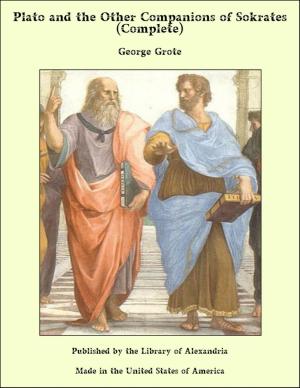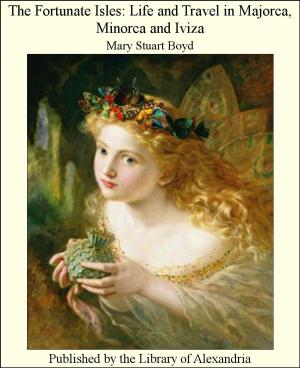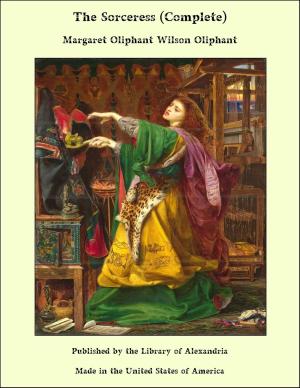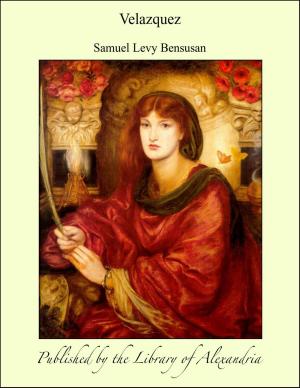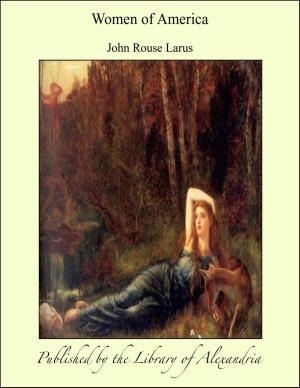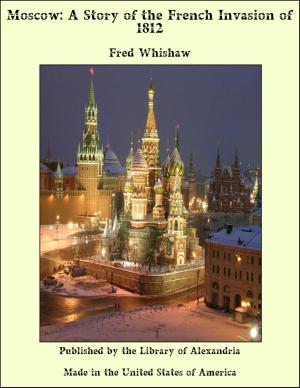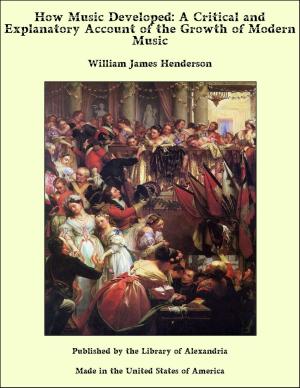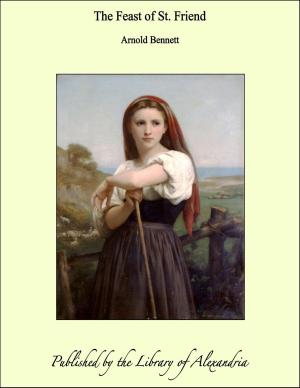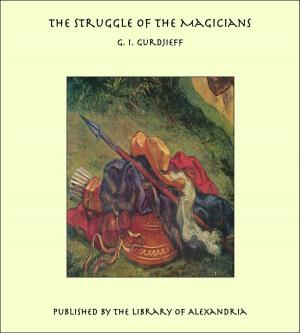Irish Witchcraft and Demonology
Nonfiction, Religion & Spirituality, New Age, History, Fiction & Literature| Author: | John D. Seymour | ISBN: | 9781613102701 |
| Publisher: | Library of Alexandria | Publication: | March 8, 2015 |
| Imprint: | Language: | English |
| Author: | John D. Seymour |
| ISBN: | 9781613102701 |
| Publisher: | Library of Alexandria |
| Publication: | March 8, 2015 |
| Imprint: | |
| Language: | English |
SOME REMARKS ON WITCHCRAFT IN IRELAND IT is said, though we cannot vouch for the accuracy of the statement, that in a certain book on the natural history of Ireland there occurs a remarkable and oft-quoted chapter on Snakes--the said chapter consisting of the words, "There are no snakes in Ireland." In the opinion of most people at the present day a book on Witchcraft in Ireland would be of equal length and similarly worded, except for the inclusion of the Kyteler case in the town of Kilkenny in the first half of the fourteenth century. For, with the exception of that classic incident, modern writers seem to hold that the witch-cult never found a home in Ireland as it did elsewhere. For example, the article on "Witchcraft" in the latest edition of the Encyclopædia Britannica mentions England and Scotland, then passes on to the Continent, and altogether ignores this country; and this is, in general, the attitude adopted by writers on the subject. In view of this it seems very strange that no one has attempted to show why the Green Isle was so especially favoured above the rest of the civilised world, or how it was that it alone escaped the contracting of a disease that not for years but for centuries had infected Europe to the core. As it happens they may spare themselves the labour of seeking for an explanation of Ireland's exemption, for we hope to show that the belief in witchcraft reached the country, and took a fairly firm hold there, though by no means to the extent that it did in Scotland and England. The subject has never been treated of fully before, though isolated notices may be found here and there; this book, however imperfect it may be, can fairly claim to be the first attempt to collect the scattered stories and records of witchcraft in Ireland from many out-of-the-way sources, and to present them when collected in a concise and palatable form. Although the volume may furnish little or nothing new to the history or psychology of witchcraft in general, yet it may also claim to be an unwritten chapter in Irish history, and to show that in this respect a considerable portion of our country fell into line with the rest of Europe. At the outset the plan and scope of this book must be made clear. It will be noticed that the belief in fairies and suchlike beings is hardly touched upon at all, except in those instances where fairy lore and witchcraft become inextricably blended. The reason for this method of treatment is not hard to find. From the Anglo-Norman invasion down the country has been divided into two opposing elements, the Celtic and the English. It is true that on many occasions these coalesced in peace and war, in religion and politics, but as a rule they were distinct, and this became even more marked after the spread of the Reformation. It was therefore in the Anglo-Norman (and subsequently in the Protestant) portion of the country that we find the development of witchcraft along similar lines to those in England or the Continent, and it is with this that we are dealing in this book; the Celtic element had its own superstitious beliefs, but these never developed in this direction. In England and Scotland during the mediæval and later periods of its existence witchcraft was an offence against the laws of God and man; in Celtic Ireland dealings with the unseen were not regarded with such abhorrence, and indeed had the sanction of custom and antiquity. In England after the Reformation we seldom find members of the Roman Catholic Church taking any prominent part in witch cases, and this is equally true of Ireland from the same date. Witchcraft seems to have been confined m the Protestant party, as far as we can judge from the material at our disposal, while it is probable that the existence of the penal laws (active or quiescent) would deter the Roman Catholics from coming into any prominence in a matter which would be likely to attract public attention to itself in such a marked degree. A certain amount of capital has been made by some partisan writers out of this, but to imagine that the ordinary Roman Catholic of, let us say, the seventeenth century, was one whit less credulous or superstitious than Protestant peers, bishops, or judges, would indeed be to form a conception directly at variance with experience and common sense. Both parties had their beliefs, but they followed different channels, and affected public life in different ways
SOME REMARKS ON WITCHCRAFT IN IRELAND IT is said, though we cannot vouch for the accuracy of the statement, that in a certain book on the natural history of Ireland there occurs a remarkable and oft-quoted chapter on Snakes--the said chapter consisting of the words, "There are no snakes in Ireland." In the opinion of most people at the present day a book on Witchcraft in Ireland would be of equal length and similarly worded, except for the inclusion of the Kyteler case in the town of Kilkenny in the first half of the fourteenth century. For, with the exception of that classic incident, modern writers seem to hold that the witch-cult never found a home in Ireland as it did elsewhere. For example, the article on "Witchcraft" in the latest edition of the Encyclopædia Britannica mentions England and Scotland, then passes on to the Continent, and altogether ignores this country; and this is, in general, the attitude adopted by writers on the subject. In view of this it seems very strange that no one has attempted to show why the Green Isle was so especially favoured above the rest of the civilised world, or how it was that it alone escaped the contracting of a disease that not for years but for centuries had infected Europe to the core. As it happens they may spare themselves the labour of seeking for an explanation of Ireland's exemption, for we hope to show that the belief in witchcraft reached the country, and took a fairly firm hold there, though by no means to the extent that it did in Scotland and England. The subject has never been treated of fully before, though isolated notices may be found here and there; this book, however imperfect it may be, can fairly claim to be the first attempt to collect the scattered stories and records of witchcraft in Ireland from many out-of-the-way sources, and to present them when collected in a concise and palatable form. Although the volume may furnish little or nothing new to the history or psychology of witchcraft in general, yet it may also claim to be an unwritten chapter in Irish history, and to show that in this respect a considerable portion of our country fell into line with the rest of Europe. At the outset the plan and scope of this book must be made clear. It will be noticed that the belief in fairies and suchlike beings is hardly touched upon at all, except in those instances where fairy lore and witchcraft become inextricably blended. The reason for this method of treatment is not hard to find. From the Anglo-Norman invasion down the country has been divided into two opposing elements, the Celtic and the English. It is true that on many occasions these coalesced in peace and war, in religion and politics, but as a rule they were distinct, and this became even more marked after the spread of the Reformation. It was therefore in the Anglo-Norman (and subsequently in the Protestant) portion of the country that we find the development of witchcraft along similar lines to those in England or the Continent, and it is with this that we are dealing in this book; the Celtic element had its own superstitious beliefs, but these never developed in this direction. In England and Scotland during the mediæval and later periods of its existence witchcraft was an offence against the laws of God and man; in Celtic Ireland dealings with the unseen were not regarded with such abhorrence, and indeed had the sanction of custom and antiquity. In England after the Reformation we seldom find members of the Roman Catholic Church taking any prominent part in witch cases, and this is equally true of Ireland from the same date. Witchcraft seems to have been confined m the Protestant party, as far as we can judge from the material at our disposal, while it is probable that the existence of the penal laws (active or quiescent) would deter the Roman Catholics from coming into any prominence in a matter which would be likely to attract public attention to itself in such a marked degree. A certain amount of capital has been made by some partisan writers out of this, but to imagine that the ordinary Roman Catholic of, let us say, the seventeenth century, was one whit less credulous or superstitious than Protestant peers, bishops, or judges, would indeed be to form a conception directly at variance with experience and common sense. Both parties had their beliefs, but they followed different channels, and affected public life in different ways

